Stockhausen’s Gesang der Jünglinge (Song of the Youths), composed in 1956, is, in many ways, the mother of all electronic music. I can remember discovering it in the 1960s, before I had acquired my first pair of Koss headphones, lying on the floor, strategically placed between two speakers, my ears opened by the copious ingestion of some red Lebanese. The combination of electronically treated live voices with purely synthetic sounds, so much a commonplace today, was then strikingly new. Along with his later pieces Kontakte and Mikrophonie, the German pioneer blazed a trail which is till being explored by young musical adventurers today.
Mouse on Mars (pictured below left) strategically placed the Stockhausen piece at the start of their concert, as a didactic reminder of their 20th-century roots, but also because the piece so simply and forcefully blasts the listener into a universe where synthetic and more obviously human sounds collide. Gesang der Jünglinge sets a text from the Book of Daniel in which the youths in question praise the Lord from within the fiery furnace. The text’s phrases, centering on a repeated and deconstructed “Preiset den Herrn!", are twisted, cut up and collaged as well as mixed and interspersed with purely electronic sound. There are few opportunities to hear this classic tape piece through the four channels for which it was intended: the haunting sounds sweep across the hall, call and respond to each other in a seemingly aleatory way. A year before Varèse’s Poème electronique, which was fed through over 400 speakers at the Brussels Expo, the young German composer was exploring the use of space in music, a breakthrough that was to change the way in which we perform and listen.
 Ur-Stockhausen is an almost impossible act to follow, and Markus Popp – trading under the name of Oval – was unable to restore the disturbing yet entrancing magic conveyed by the opening classic. After the immersive buzz of listening to a tape piece in the dark, Popp’s attempts at performing yet not performing, hunched up over his laptop in a pool of light that suggested rather unconvincingly an aura of drama, felt a little forced. His pouts and grimaces expressed rather too well the uneasy urgency that characterised a set built on trope-bound formulae that gained nothing from being repeated. He works with a palette of sounds and technical shortcuts that should put old tape-splicing Stockhausen in the shade, but the result is far less beguiling, lacking in warmth and depth, imprisoned rather than freed by technology, in a way that the pioneers of synthetic sound understood and sought to avoid from the start.
Ur-Stockhausen is an almost impossible act to follow, and Markus Popp – trading under the name of Oval – was unable to restore the disturbing yet entrancing magic conveyed by the opening classic. After the immersive buzz of listening to a tape piece in the dark, Popp’s attempts at performing yet not performing, hunched up over his laptop in a pool of light that suggested rather unconvincingly an aura of drama, felt a little forced. His pouts and grimaces expressed rather too well the uneasy urgency that characterised a set built on trope-bound formulae that gained nothing from being repeated. He works with a palette of sounds and technical shortcuts that should put old tape-splicing Stockhausen in the shade, but the result is far less beguiling, lacking in warmth and depth, imprisoned rather than freed by technology, in a way that the pioneers of synthetic sound understood and sought to avoid from the start.
The second half of the concert, which featured Mouse on Mars, along with the German contemporary music orchestra musikFabrik and conductor André de Ridder, displayed a maturity often lacking in a world of electronica ruled by somewhat adolescent obsessions with innovation for innovation’s sake and the seductive power of ever-improving sound media. The improbably named Mouse on Mars are Andi Toma and Jan St Werner. They have been making music together for over 20 years, and the only constant in their collaboration has been an ability for constant self-renewal. They are not bound by school or genre, playfully surfing between pop and avant-garde, dance and more hardcore electronica.
Watch Mouse on Mars perform Paeanumnion
Paeanumnion is a piece they have conceived for musikFabrik, a remarkable collective of musicians who specialise in new work. As this was their first orchestral piece, they wisely sought the help of conductor André de Ridder and composer Stefan Streich who scored the work from orchestral samples and electronic sounds provided by Toma and St Werner. The resulting conversation between orchestra and electronic sound was gripping: fresh yet never forbidding, emotionally engaging yet never manipulative, and navigating the difficult interface between instrumentally and machine-originated sound with breathtaking originality and elegance.
At one point a member of the orchestra blew a giant conch, the otherworldly sound meshing mysteriously with their electronic doubles
With the exception of a few moments when the piece seemed to lose its way and an overall structure that was perhaps not as strong as its parts, the collaboration demonstrated Mouse on Mars’s uniquely imaginative creativity. Ably supported by an orchestra who were clearly enjoying themselves – and swinging, when called to, with a vengeance - and a conductor who communicated his conviction in the score’s strength to the players, Toma and St Werner took us on an entrancing journey through a series of soundscapes that echoed with resonances of Wagner, Zappa, Gil Evans, hard rock and free jazz. The piece ran seamlessly from humour and exuberance through to eerie melancholia, sometimes carried by the centring power of drones generated by gong-like pieces of metal and reworked by the two alchemists at their laptops, and at others times by the rhythmic pulse of electronic beats or fiercely bowed strings.
There were particular moments of magic: as when the violins and violas sliced their bows through the air to produce that whizzing sound many of us will remember from childhood, and the wind players breathed through their reeds and embouchures, all of these sounds transmuted by Mouse on Mars, as they were made and then re-emerging, as so many sonic memories, further down the line. At one point a member of the orchestra blew a giant conch, the otherworldly sound meshing mysteriously with their electronic doubles. At another, the orchestra and electronics rose to a gigantic Varèsian climax, only to be followed by a glockenspiel-driven passage of sublime gentleness and grace.
There was no need here for stage histrionics, although the lighting changes and dry ice clearly yet unobtrusively helped. There was enough drama in the music, on the linear level of mood changes and musical development as well as through the conjunction and clash of textures and timbres. In this particular conversation, both engagingly playful and seriously groundbreaking, Mouse on Mars demonstrated that the meeting of instrumental music and electronics can produce work of a depth and significance that stands well in the great tradition of German musical history.




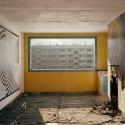
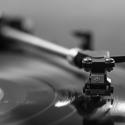
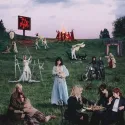
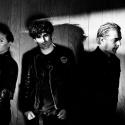


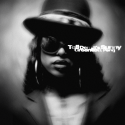




Add comment